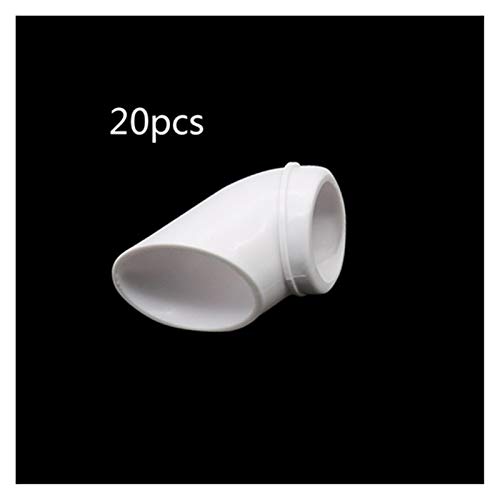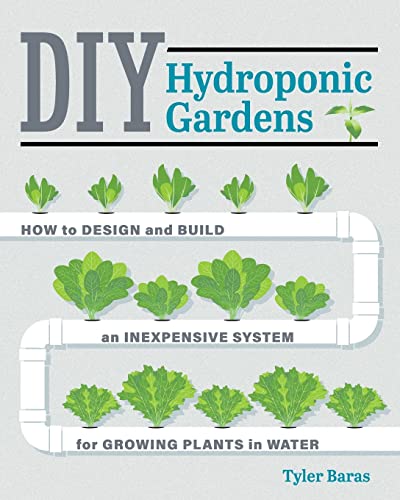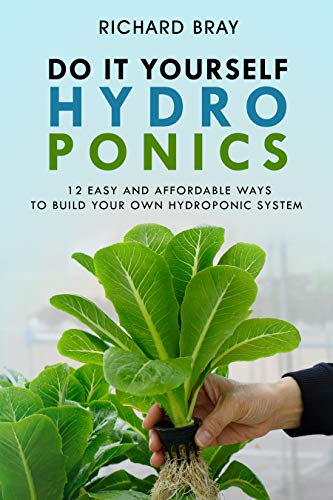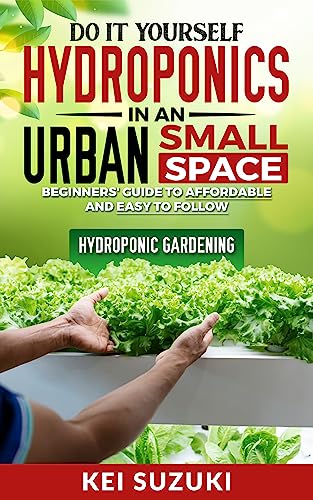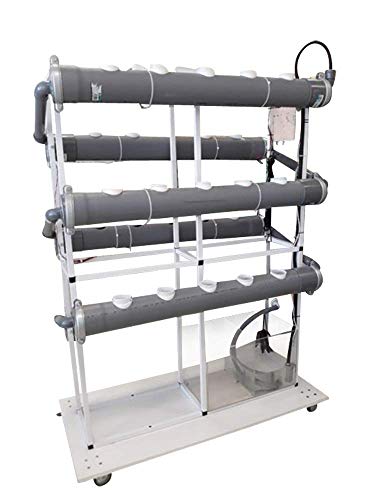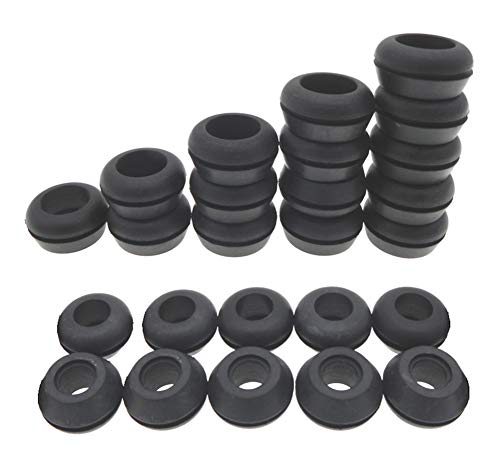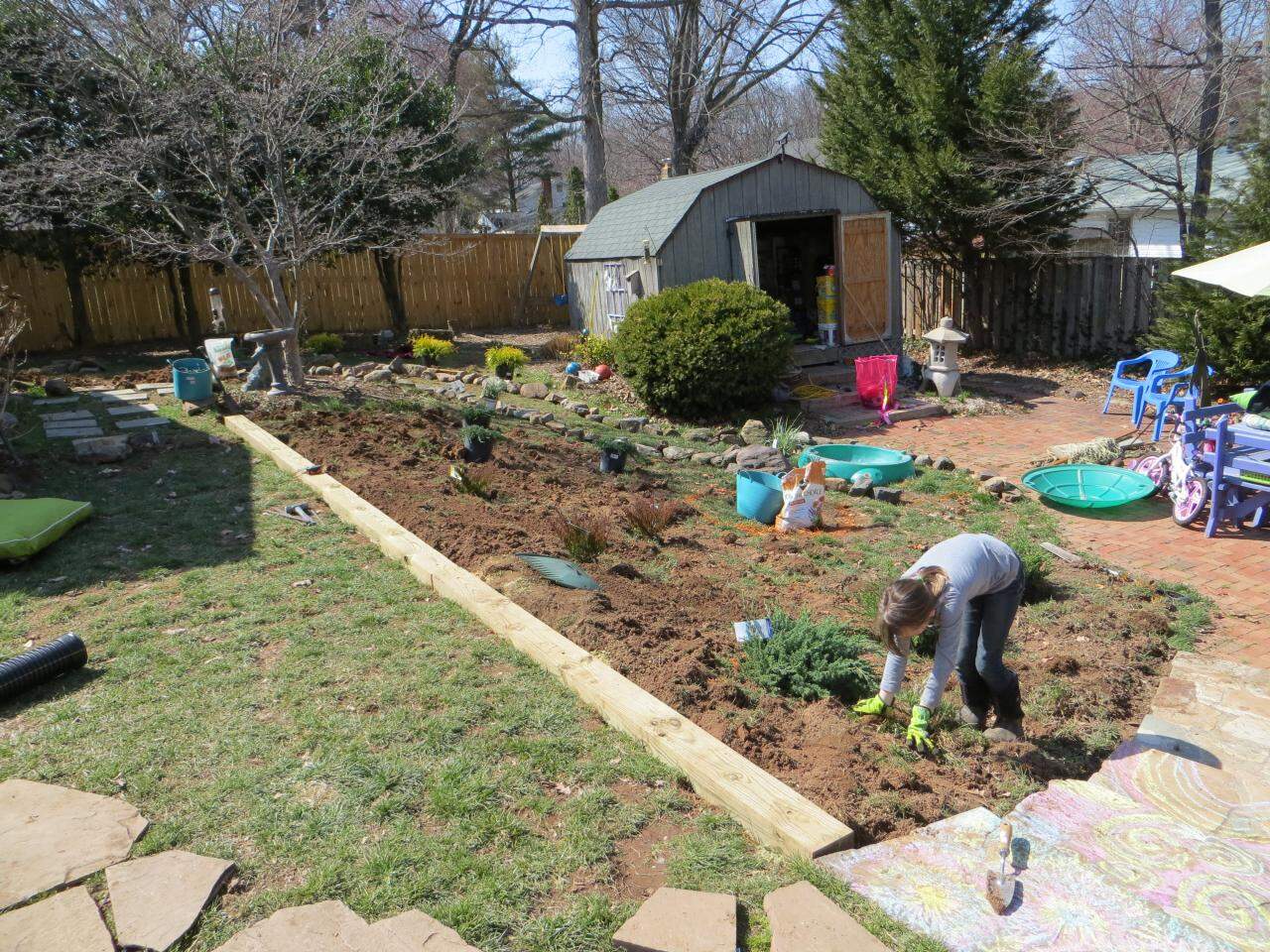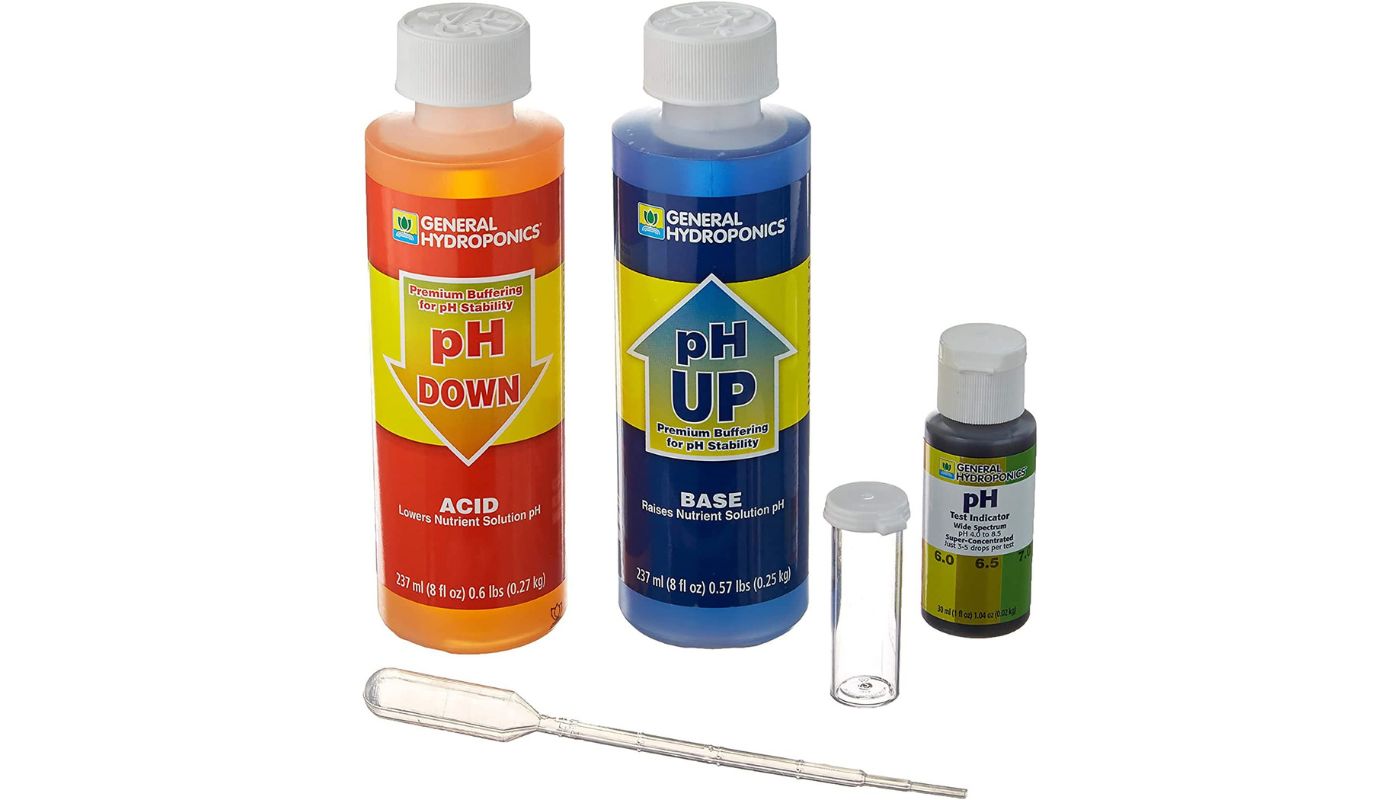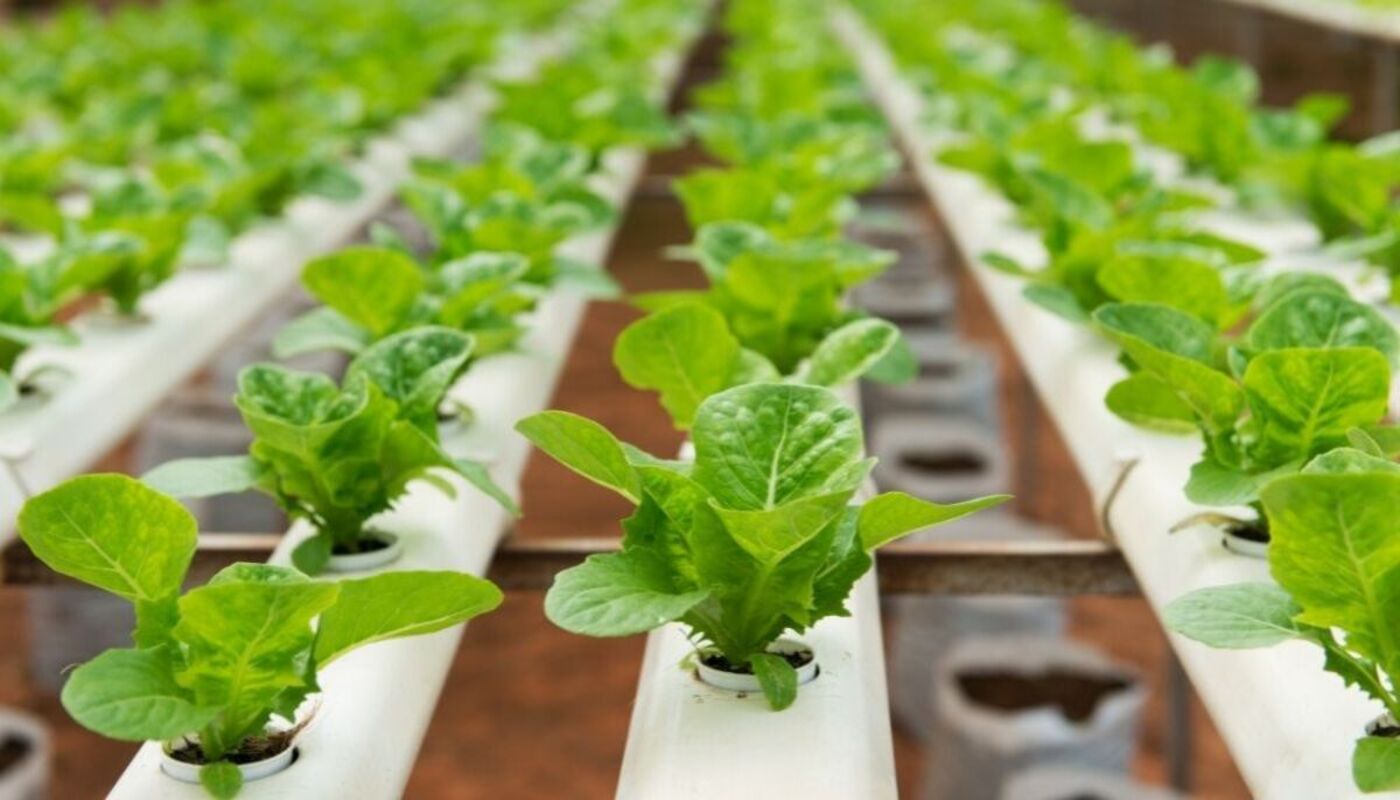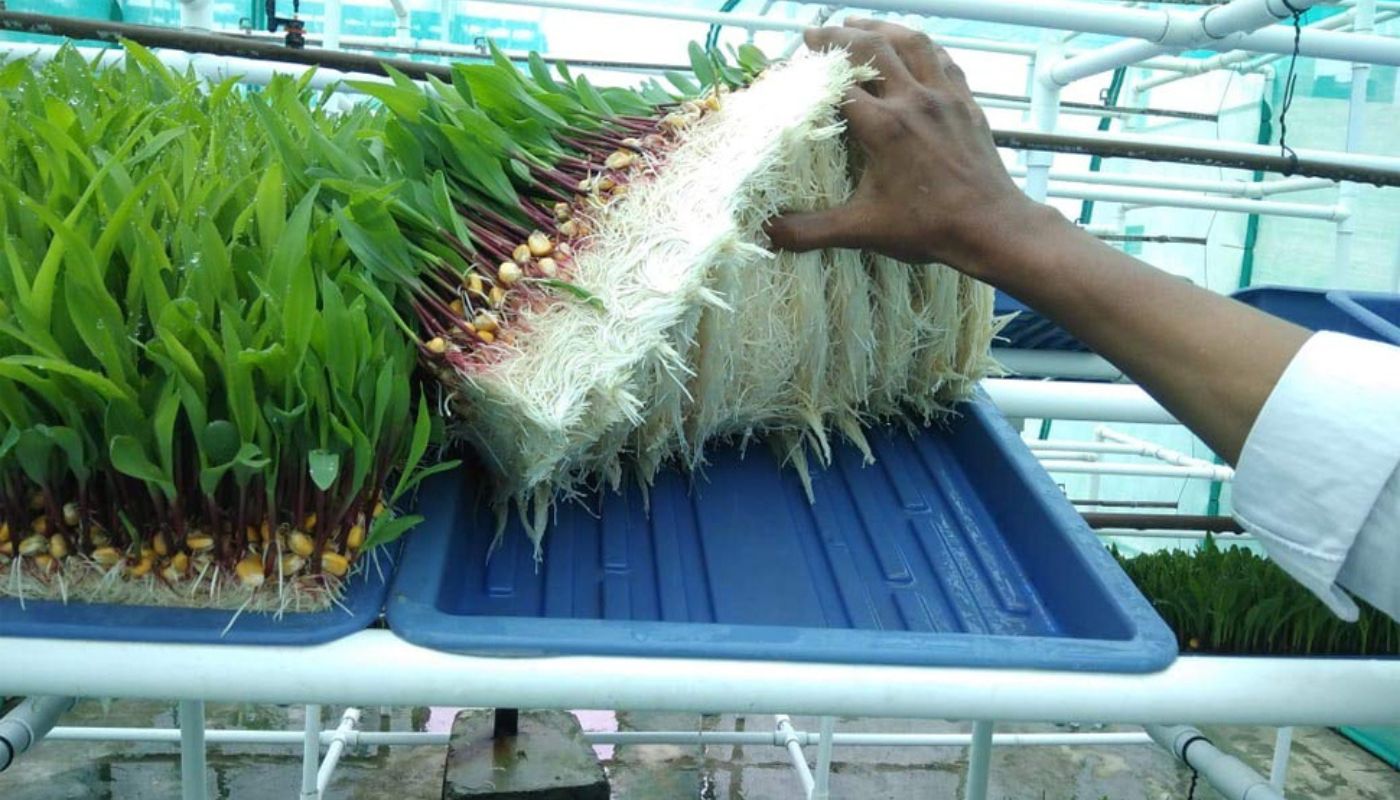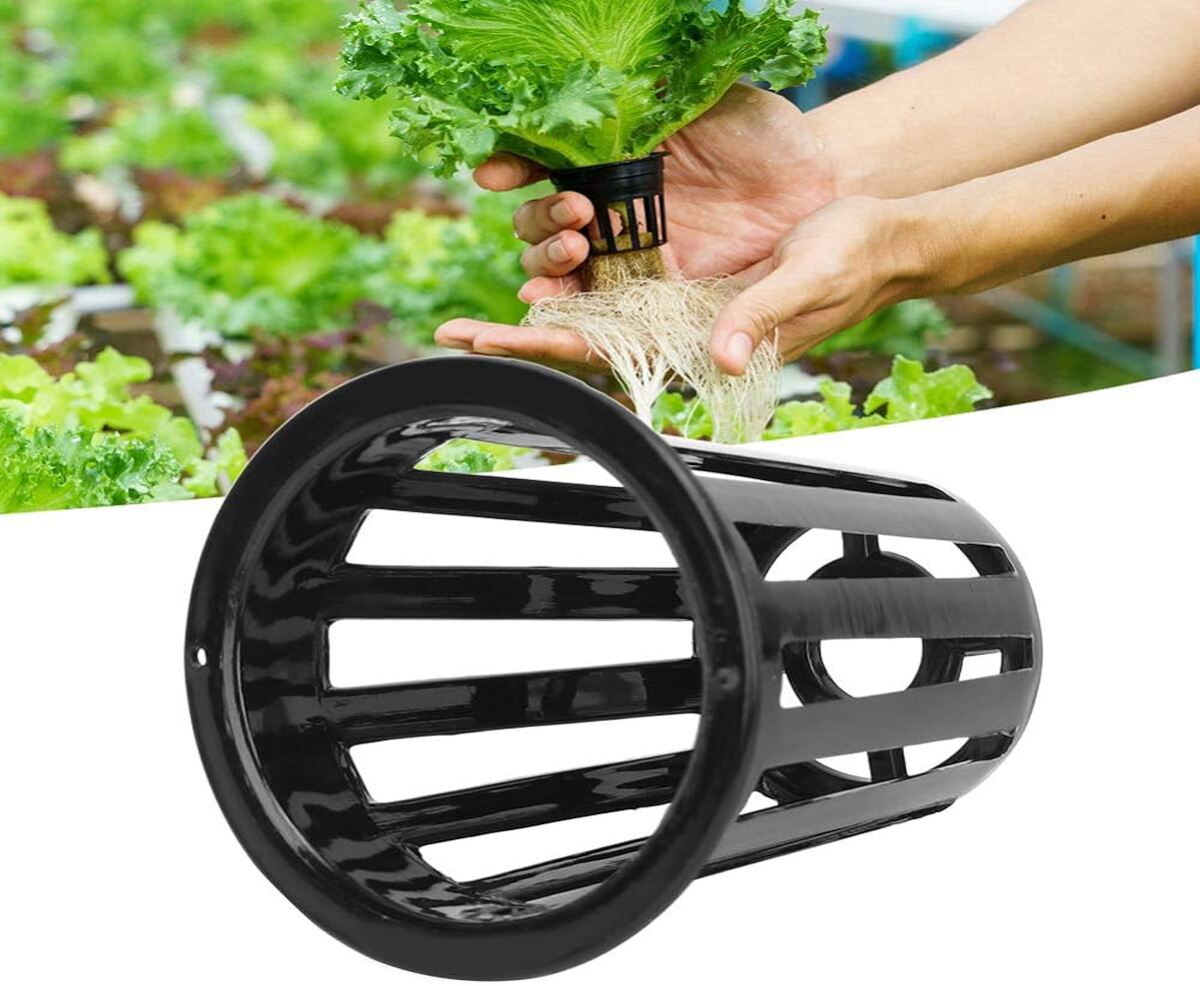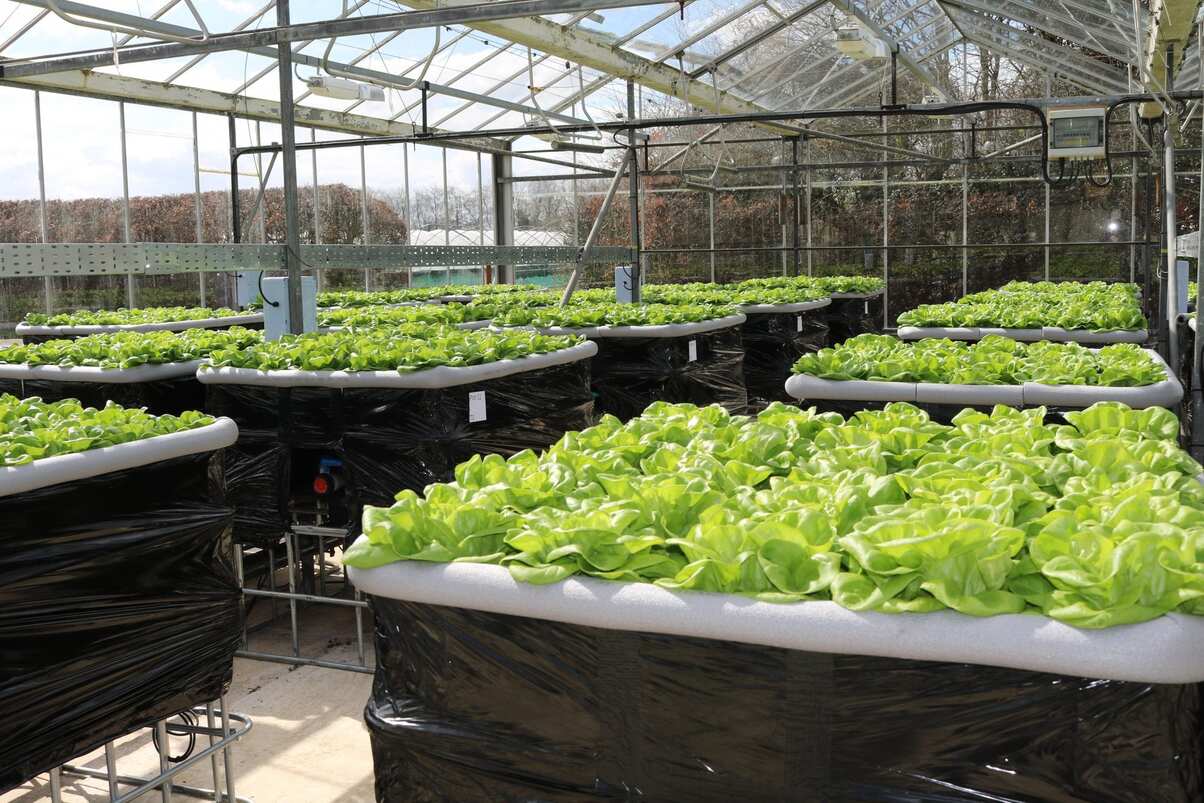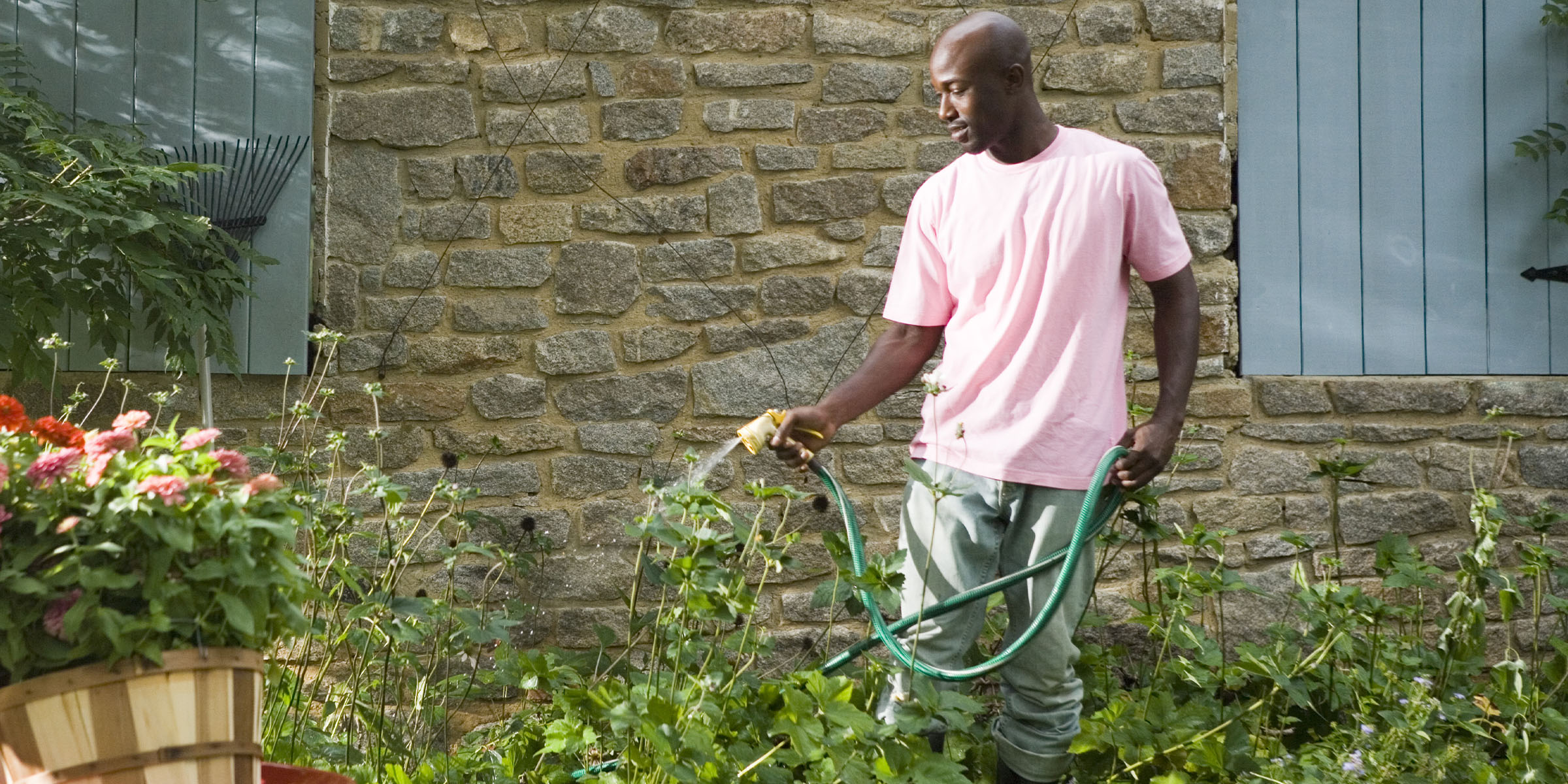Home>Gardening Techniques>DIY Projects>11 Amazing DIY Hydroponics For 2024
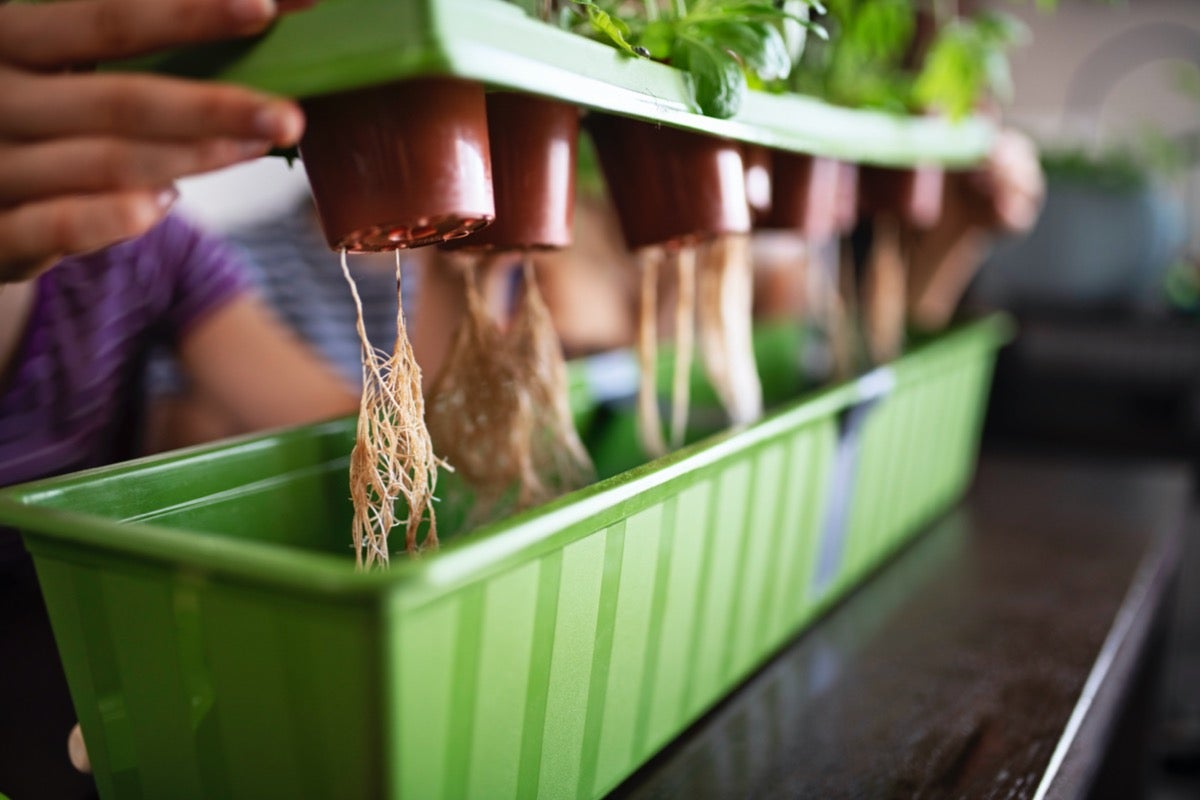

DIY Projects
11 Amazing DIY Hydroponics For 2024
Published: August 31, 2023
Discover 11 incredible DIY hydroponics projects for 2023. Learn how to cultivate your own indoor garden with these innovative methods.
(Many of the links in this article redirect to a specific reviewed product. Your purchase of these products through affiliate links helps to generate commission for Chicagolandgardening.com, at no extra cost. Learn more)
Introducing “11 Amazing DIY Hydroponics for 2023” – a comprehensive guide that will revolutionize your gardening experience. Whether you’re a seasoned horticulturist or just starting out, this expertly crafted collection showcases the most innovative and accessible hydroponic systems available. By harnessing the power of water and nutrition, these DIY setups offer an efficient, cost-effective, and sustainable approach to growing plants. Prepare to explore cutting-edge techniques, creative designs, and step-by-step instructions that will allow you to cultivate a thriving indoor garden all year round. Get ready to embark on an exciting journey to discover the wonders of hydroponics in the coming year!
Overall Score: 8/10
Upgrade your gardening experience with the WYGOAKG 40Pcs DIY Hydroponic Pots. This hydroponics vertical tower system allows you to grow vegetables without soil, making it an efficient and space-saving solution. The pots are made of high-quality plastic material, specifically PP, ensuring durability and longevity. With its white color, it complements any garden or indoor space effortlessly. The WYGOAKG hydroponic pots are an excellent option for those who want to embrace a soilless growing method and maximize their crop yield. Its innovative design and construction make it a standout choice in the world of gardening products.
Key Features
- Origin: CN(Origin)
- Material: Plastic
- Plastic Type: PP
Specifications
- Color: White
Pros
- Efficient and space-saving hydroponic growing system
- Durable and long-lasting plastic material
- Versatile white color suits any garden or indoor space
Cons
- Does not include additional accessories or plants
With the WYGOAKG 40Pcs DIY Hydroponic Pots, you can easily implement a soilless growing system and optimize your vegetable yield. The plastic pots are built to last, and their versatile white color adds a touch of elegance to your gardening setup. While the product doesn’t come with extra accessories or plants, it provides a sturdy foundation for your hydroponic tower. Embrace the future of gardening with this innovative and space-efficient solution.
Overall Score: 8.2/10
Introducing the WQAZ Garden Supplies 20pcs Hydroponics Vertical Tower Pipe, the perfect solution for soilless cultivation. Made with durable materials and a moderate mesh size, this hydroponic nursery pot is ideal for various growing systems. It is suitable for growing leafy vegetables like celery and leeks, as well as fruits and vegetables such as cucumbers and tomatoes. The sponge block cut openings make it easy to clip seedlings and protect their roots. With good sealing water performance, this gardening accessory ensures optimal growth conditions for your plants.
Key Features
- Durable materials for long-lasting use
- Moderate mesh size suitable for various soilless cultivation equipment
- Ideal for growing leafy vegetables and fruits/vegetables
- Easy clip seedlings with sponge block cut openings
- Protects vegetable seedling roots
Specifications
- Color: Only Nursery Pots
Pros
- Durable and long-lasting construction
- Suitable for various types of hydroponic systems
- Easy to use with seedlings
- Protects vegetable seedling roots
Cons
The WQAZ Garden Supplies 20pcs Hydroponics Vertical Tower Pipe is a reliable and efficient solution for soilless cultivation. With its durable construction, moderate mesh size, and easy-to-use features, it provides a convenient way to grow a variety of vegetables and fruits. The sponge block cut openings and protective design ensure the health and growth of your seedlings. Whether you’re a seasoned gardener or a beginner in hydroponics, this gardening accessory is worth considering. Enhance your gardening experience and achieve impressive results with the WQAZ Hydroponics Vertical Tower Pipe.
Overall Score: 8/10
DIY Hydroponic Gardens: How to Design and Build an Inexpensive System for Growing Plants in Water is a comprehensive guidebook that provides step-by-step instructions for designing and building various types of hydroponic systems. It covers the basics of hydroponics, nutrient solutions, and relevant crop information. The book is praised for its thoroughness, detailed explanations, and helpful pictures. It is recommended for beginners and advanced hydroponics enthusiasts alike. The author also includes sections on plant types, seed germination, and other useful tips. Although some readers found the book lacking in information about lighting and water parameters, overall it is regarded as a valuable resource for anyone interested in hydroponic gardening.
Key Features
- Comprehensive guide on designing and building hydroponic systems
- Step-by-step instructions and helpful pictures
- Covers basics of hydroponics, nutrient solutions, and crop information
- Includes sections on plant types, seed germination, and more
Specifications
- Dimension: 8.00Lx0.50Wx10.00H
Pros
- Thorough and detailed explanations
- Useful for beginners and advanced hydroponics enthusiasts
- Includes helpful pictures and diagrams
Cons
- Lacks information on lighting and water parameters
- Limited coverage on nutrient solutions
DIY Hydroponic Gardens: How to Design and Build an Inexpensive System for Growing Plants in Water is a valuable resource for anyone interested in hydroponic gardening. While it may have some limitations in terms of lighting and water parameters, it provides comprehensive instructions and helpful tips for building and maintaining various hydroponic systems. The book is praised for its thoroughness and detailed explanations, making it suitable for beginners and experienced hydroponics enthusiasts. Whether you’re looking to start a small-scale hydroponics garden or expand your existing knowledge, this book is a must-have.
Overall Score: 8.2/10
Looking to get into hydroponics? The DIY Hydroponics book is the perfect guide for beginners and experienced gardeners alike. With 12 easy and affordable ways to build your own hydroponic system, this book offers a wealth of knowledge and practical tips. From setting up your system to troubleshooting common issues, this book covers it all. Whether you’re interested in growing plants without soil or want to extend your growing season, this book has you covered. The clear instructions and illustrations make it easy to follow along, and the diverse design variations provide plenty of options. Overall, this book is a great resource for small home growers and anyone looking to explore the world of hydroponics.
Key Features
- 12 easy and affordable ways to build your own hydroponic system
- Useful collection of hydroponic systems and troubleshooting tips
- Provides detailed instructions and illustrations for easy setup
- Diverse design variations for each type of hydroponic system
Specifications
Pros
- Clear and easy-to-understand instructions
- Great resource for beginners and experienced hydroponic gardeners
- Offers a wealth of knowledge and practical tips
Cons
- Lacks detailed information on high pressure systems
- May be too basic for experienced hydroponic gardeners
The DIY Hydroponics book is a valuable resource for anyone interested in exploring hydroponic gardening. Its clear instructions and diverse design options make it suitable for beginners and experienced growers alike. While it may lack advanced information on high pressure systems, it provides a solid foundation for building and maintaining your own hydroponic system. Whether you’re looking to grow plants without soil or extend your growing season, this book has you covered. Overall, it’s a great investment for small home growers and a handy guide to have on hand for troubleshooting and expanding your hydroponic garden.
Overall Score: 9/10
Looking to start hydroponic gardening in a small space? DIY Hydroponics in an Urban Small Space is the perfect guide for beginners. This easy-to-follow book provides affordable tips and tricks for successful hydroponics. It covers the history of hydroponic gardening, the best plants to grow, and practical tips for maintaining your garden. With clear instructions and helpful illustrations, this guide is ideal for those looking to grow their own food in urban environments. Whether you’re a beginner or have some experience in gardening, this book will leave you feeling empowered and excited to start your hydroponic journey.
Key Features
Specifications
- N/A
Pros
- Easy Read! This book is easy to read and is not boring.
- Great to get Started!! This book was a interesting read. Quite informative and has me looking forward to starting a little garden in small space. It tells you lots of tid bits of information you may need that didn’t realize. For the price you can’t beat it, really.
- Very Informative! This was an easy simple book to read and follow. Its a great beginner book for those interested in Hydroponics for small spaces. I just started my little garden with hopes to flourish! and for the price definitely worth buying.
- What a reasource! This books hold so many tips and tricks to successful hydroponics. I can o ly hope to be successful the coming season!
- Great learning tool! I thought this was a great knowledgeable learning tool for someone reading this book to learn how to diy.. other parts of this book has more details than other parts but still a great book.. I’ve recommended to a few friends who actually went and bought t.. quick and short easy read for those who aren’t big on reading..
- Great read!!!! This book is awesome! Great for beginner Hydro-planters! I really enjoyed reading!!
- Great Beginner’s Guide! For the price of the kindle book, you really can’t go wrong with this reader-friendly beginner’s guide to hydroponic planting. These days there’s so much power in growing your own food and this book has definitely left me feeling empowered to do just that. It breaks down the history of this type of gardening and why certain environments are better suited for it. It details the easiest plants to start with and the ideal greens and fruits to grow. The tips are practical and easy to understand. The book gives BOTH the pros and cons or major issues you may run into of hydroponic gardening which I appreciate. Would I recommend this to someone to purchase? Absolutely! I think it’s a great beginners guide for someone who is interested in this type of gardening and would like an overview of what to expect. While I’m still going to do more research before officially beginning, I will say this guide has left me feeling way more informed than before I read it and still excited to start this journey!
- Great book! If you’re planning or have started your own hydroponic garden this is the book for you. Instead of learning from trial and error of your own, this little book gives you insight on the to do’s to avoid and minimize mistakes and encourages you to keep going. Gives you great advice to make sure you and your garden thrive to the max with minimal mistakes of your own. It also tells you the various ways you could build your garden and pros of starting your hydroponic garden vs a regular soil garden. Definitely worth the read.
- Confidence booster when it comes to starting with hydroponics!! This book was very instructive and gave me a lot of confidence about getting started in hydroponics. The discussion about the different systems was insightful. The book goes into a lot of detail about the inputs needed for each system, the advantages and disadvantages of each one, and the steps needed to put the entire system together. It’s a great beginner’s manual to get a solid background on the system that will work best in your own space, given your level of commitment to maintaining the system. The identification of the best plants for hydroponics (e.g., kale and mustard & asian greens) and guidelines on harvesting were informative and helped me formulate in my mind what I’d like to start with first to ensure success: herbs! There’s also thorough coverage of nutrients needed by the plants as well as dealing with pests and mold/mildew, which was one of the concerns I’ve always had about hydroponics. I appreciated the reference to organic, natural substances to keep the area clean of pests, including neem oil and potassium bicarbonate. The cons was the amount of repetition in the book. It was a little tiresome at this. It could’ve been edited more to present more streamlined content. Also the discussion about plant cloning seemed intimidating and not something for me. It was a particularly advanced content and its placement of this discussion in the middle of the book interrupted the flow of the book for me.
- Excellent reference! I was brand new to the world of hydroponics and looking for a starter guide. This one exceeded my expectations with information about different types if systems, best plants to try, and seed starting. I love how easy to understand the book is and that there are a number of illustrations. Each chapter contains a great bulletin summary and the bibliography has tons of live reference links. Highly recommend this one if you are starting out and need a comprehensive, but easy to follow, reference guide.
Cons
- The amount of repetition in the book
- Discussion about plant cloning seemed intimidating
DIY Hydroponics in an Urban Small Space is a fantastic beginner’s guide to hydroponic gardening. It offers affordable and easy-to-follow tips and tricks for anyone looking to start their own garden in a small space. The book covers a wide range of topics, from the history of hydroponics to the best plants to grow. With practical advice, clear instructions, and helpful illustrations, this guide will leave you feeling confident and excited to begin your hydroponic journey. While there are a few minor drawbacks, such as repetitive content and a discussion on plant cloning that may be intimidating for some readers, overall, this book is a valuable resource for anyone interested in hydroponic gardening.
Overall Score: 8.7/10
Hydroponics for Beginners: The Complete Guide to Hydroponic Gardening is an exceptional guide that demystifies the revolutionary gardening method of hydroponics. With clear and concise explanations, this book equips readers with the knowledge and tools to successfully grow vegetables, fruits, and herbs in water without soil. The author’s personal experiences and expertise shine through, making this book a valuable resource for both beginners and seasoned gardeners. From understanding the principles of hydroponics to selecting the right system, building a hydroponic setup from scratch, and nurturing plants for optimal growth, this book covers it all. The step-by-step instructions, coupled with useful tips and techniques, provide readers with the confidence to embark on their hydroponic journey.
Key Features
Specifications
Pros
- Clear and concise explanations
- Step-by-step instructions with useful tips
- Suitable for beginners and seasoned gardeners
Cons
- Leaves some basic questions unanswered
- May be too basic for some readers
Hydroponics for Beginners: The Complete Guide to Hydroponic Gardening is a comprehensive and informative resource for anyone interested in venturing into the world of hydroponic gardening. With its practical guidance and clear instructions, this book provides the necessary knowledge and confidence to successfully grow vegetables, fruits, and herbs in water without soil. Whether you are a beginner or an experienced gardener, this guide will equip you with the tools and techniques needed to create your own hydroponic setup and nurture your plants for optimal growth. While some readers may find the information too basic or leaving unanswered questions, overall, this book is a valuable asset for anyone looking to explore the benefits of hydroponics.
Overall Score: 8.2/10
The HORTIPOTS DWC Air Diffuser Bubbler Kit is a powerful tool for maximizing oxygen in hydroponic systems, fish farms, and aquariums. With its unique oxygen bubble tubing kit, it generates millions of air bubbles with dissolved oxygen every minute, promoting healthier root development and faster rooting. This kit can be used as a replacement for HortiPots Air Diffusing DWC Bubbler series or in other DIY hydroponic systems. Its evenly distributed dissolved oxygen delivers remarkable growth results. The kit comes with suction cups for easy installation, and it outperforms traditional air stone products. Overall, this product provides an efficient way to enhance root health and optimize plant growth in various hydroponic setups.
Key Features
- Generates millions of air bubbles with dissolved oxygen
- Used in Horti Pots DWC cloners and hydroponic systems
- Can be used in DIY hydroponic and deep water culture systems
- Outperforms traditional air stone products
- Delivers evenly distributed dissolved oxygen
Specifications
- Color: White
- Dimension: 13.00Lx9.50Wx3.20H
- Size: Air Diffuser Kit-Small
Pros
- Promotes healthier root development
- Enhances plant growth
- Versatile and compatible with various setups
- Easy to assemble and install
Cons
- May require upgrading the air line
- Suction cups may not work well on plastic surfaces
The HORTIPOTS DWC Air Diffuser Bubbler Kit is a reliable and efficient solution for enhancing oxygen levels in hydroponic systems. Its unique oxygen bubble tubing kit generates a continuous stream of dissolved oxygen, promoting faster rooting and healthier root development. This versatile kit can be used in different HortiPots systems as well as DIY hydroponic setups. While it outperforms traditional air stone products and offers easy assembly, some users may find the need to upgrade the air line or use alternative methods to secure the tubing in place. Overall, this kit proves to be an essential tool for maximizing plant growth and ensuring thriving root systems in various gardening applications.
Overall Score: 8/10
Take your gardening to the next level with this Hydroponic System. It comes with detailed plans for DIY enthusiasts to build their own self-watering plant vegetable hydroponics. The system allows you to easily cultivate plants without soil by using nutrient-rich water. Whether you’re a beginner or an experienced gardener, this homemade hydroponic system is a great choice for growing your own fresh produce. The hydroponics grower DIY kit provides all the necessary materials and instructions to get started. With this system, you can grow plants efficiently while conserving water and space. Upgrade your gardening skills with this innovative and versatile hydroponic system.
Key Features
- Hydroponic System plans
- DIY Build Your Own
- Self Watering Plant Vegetable Hydroponics
- Homemade Hydroponic System
- Hydroponics Grower DIY
Specifications
- N/A
Pros
- – Detailed plans for DIY enthusiasts
- – Allows cultivation without soil
- – All necessary materials and instructions provided
- – Efficient water and space usage
- – Versatile and innovative
Cons
The Hydroponic System is a fantastic option for gardeners looking to explore hydroponics. With its DIY approach, you can customize the system to fit your needs while enjoying the benefits of growing plants without soil. The detailed plans make it easy for beginners to get started, and the provided materials ensure a hassle-free setup. From conserving water to maximizing space, this system offers efficiency and versatility. Whether you’re growing vegetables, herbs, or flowers, this hydroponic system enables you to create a thriving garden indoors or outdoors. Embrace the future of gardening and create your own self-watering hydroponic system today!
Overall Score: 8/10
Looking for a comprehensive guide on hydroponics, aquaponics, and greenhouse gardening? Look no further! This book bundle contains four books in one, offering a complete beginner’s guide to growing healthy organic fruits and vegetables all year round. Whether you’re new to gardening or an experienced grower, this resource is packed with over 550 pages of valuable information and explanations that are easy to understand without being overly scientific. From setting up your own hydroponics and aquaponics systems to maximizing the productivity of your greenhouse, this book covers it all. Discover the secrets of indoor gardening and enjoy a bountiful harvest with this must-have collection!
Key Features
Specifications
Pros
Cons
If you’re looking to dive into the world of hydroponics, aquaponics, and greenhouse gardening, this 4-in-1 book bundle is a fantastic resource. It provides a wealth of information on these topics, making it suitable for beginners and experienced gardeners alike. The explanations are clear and easy to follow, ensuring that you’ll be able to implement the techniques and tips shared in the book effectively. While some readers have complained about the quality of the physical copy, the content itself is highly valuable. With over 550 pages of guidance, you’ll be equipped with the knowledge and skills to grow healthy organic fruits and vegetables all year round. Overall, this book bundle is a great investment for anyone interested in indoor gardening.
Overall Score: 8/10
Looking to start your own hydroponic garden? The DIY Hydroponics Gardens book is here to guide you! This complete guide provides valuable tips and instructions on how to quickly build your own greenhouse and create a self-sustainable garden using a hydroponics growing system. Whether you’re a beginner or an experienced gardener, this book offers useful information and reminders for indoor farming. With easy-to-read content and interesting insights, it’s the perfect resource for all gardening enthusiasts. Expand your knowledge and learn how to create your perfect DIY hydroponic garden with this informative book.
Key Features
- Provides a complete guide to DIY hydroponic gardening
- Includes tips and instructions for building a greenhouse
- Teaches you how to create a self-sustainable garden
- Offers insights for high production indoor farming
- Easy-to-read content with useful information
Specifications
- Dimension: 5.00Lx0.36Wx8.00H
Pros
- Useful book for beginners and experienced gardeners
- Clear content and easy to read
- Valuable tips and interesting insights
Cons
- Limited information on specific plant species
The DIY Hydroponics Gardens book is an excellent resource for anyone interested in starting their own hydroponic garden. With its valuable tips and instructions, it provides a comprehensive guide for beginners and experienced gardeners alike. The easy-to-read content and interesting insights make it an enjoyable read, while the instructions on building a greenhouse and creating a self-sustainable garden are practical and informative. However, it would have been even more helpful if the book included more information on specific plant species. Overall, this book is a great addition to any gardening enthusiast’s collection and a valuable tool for those looking to explore the world of hydroponics.
Overall Score: 8/10
The Rubber Grommet 1/2 Inch is designed to create a waterproof seal in DIY hydroponic systems and other irrigation systems. With its donut shape, it ensures a leak-free transfer of water or nutrient solutions between reservoirs using tubing and barbed fittings. Made durable, this grommet is a reliable choice to replace worn-out seals in existing dripping or hydroponic systems. It is compatible with barbed connector fittings and can be used with 1/2 inch vinyl tubing, hose, or poly drip lines of the same size. The inner diameter of the grommet is 1/2 inch, but the drilled hole on the bucket it fits into needs to be 13/16 to 7/8 inch. Overall, this product provides an affordable and effective solution for creating water tight seals in hydroponic systems.
Key Features
- WATER TIGHT Rubber Grommets for hydroponic systems
- LEAK-FREE SEAL with donut-shaped design
- DURABLE for long-lasting use
- Compatible with barbed connector fittings and 1/2 inch vinyl tubing
Specifications
- Color: Black
- Dimension: 0.60Lx1.00Wx1.00H
- Size: 1/2 inch grommet
Pros
- Affordable and cost-effective solution
- Easy to use in DIY setups
- Provides a snug and leak-free fit
- Durable and long-lasting
Cons
- May not work well in RDWC hydroponic systems
- Some grommets may leak under pressure
The Rubber Grommet 1/2 Inch is a reliable and affordable option for creating water tight seals in hydroponic systems. Its donut-shaped design ensures a leak-free transfer of water or nutrient solutions between reservoirs. The grommet is durable and long-lasting, making it suitable for replacing worn-out seals in existing systems. With its compatibility with barbed connector fittings and 1/2 inch vinyl tubing, it provides an easy and convenient solution for DIY setups. While it may not be the best choice for RDWC hydroponic systems, it is still a great option for other setups. Overall, the Rubber Grommet 1/2 Inch is a valuable addition to any gardening enthusiast’s toolkit.
Buyer’s Guide: DIY Hydroponics
Why should you consider DIY hydroponics?
- More control: With DIY hydroponics, you have full control over the nutrients, water, and environment that your plants receive, resulting in healthier and more productive growth.
- Space efficiency: Hydroponic systems can be designed to fit in small spaces, making them ideal for urban gardeners or those with limited outdoor space.
- Water conservation: Hydroponics uses significantly less water compared to traditional gardening methods, making it a more environmentally friendly option.
What do you need to get started?
- Containers: Choose containers based on the size of your plants. Options include buckets, grow bags, or even repurposed materials like plastic bottles.
- Growing medium: Depending on the hydroponic system you choose, you may need a growing medium to support the roots. Common options include perlite, vermiculite, or coconut coir.
- Nutrients: Hydroponic plants require nutrient solutions since they don’t obtain nutrients from soil. Liquid nutrients or nutrient “powders” are readily available for purchase, or you can make your own.
- Water pH kit: Maintaining the correct pH levels is essential for hydroponics. Invest in a pH kit to ensure your nutrient solution is at the optimal pH level for your plants.
- Lighting: Most hydroponic systems require artificial lighting since they may not receive sufficient natural sunlight. LED grow lights are energy-efficient and provide the right spectrum for plant growth.
- Pumps and timers: Consider purchasing pumps and timers to automate the watering process, ensuring your plants receive water at regular intervals.
- pH adjustment supplies: Sometimes, the pH of your water or nutrient solution may be too high or low. Keep pH adjustment solutions or products, such as pH up and pH down, on hand to maintain the balance.
- Ventilation and airflow: Proper ventilation and airflow prevent the growth of mold and ensure a healthy environment for your plants. Fans or air circulation systems can help achieve this.
What are the different types of hydroponic systems available?
- Wick System:
- Water is carried to the plant’s roots through a wick.
- Suitable for small plants and beginners due to its simplicity.
- Deep Water Culture (DWC):
- Plants immersed in a nutrient-rich water solution.
- Requires an air pump and an airstone to provide oxygen to the roots.
- Nutrient Film Technique (NFT):
- A shallow stream of nutrient solution flows continuously over the plant roots.
- Suitable for smaller plants, herbs, and lettuce.
- Ebb and Flow System (Flood and Drain):
- Nutrient solution floods the plants’ growing tray periodically, then drains back into a reservoir.
- Suited for larger plants and vegetables.
- Aeroponics:
- Plant roots suspended in air and misted with nutrient solution.
- Ideal for rapid growth and high yield, but requires more technical knowledge.
What maintenance is required for hydroponic systems?
- Regular monitoring: Keep a close eye on pH levels, nutrient concentrations, and water temperature to ensure the optimal growing conditions for your plants.
- Cleaning and sterilization: Prevent the buildup of algae or harmful bacteria by regularly cleaning and sterilizing your hydroponic system and equipment.
- Nutrient solution changes: Replenish the nutrient solution regularly to maintain the right nutrient balance for your plants.
- Troubleshooting: Learn to identify and address common issues such as nutrient deficiencies, pests, or plant diseases to keep your plants healthy.
- System adjustments: As your plants grow, adjust the position of grow lights, increase/decrease watering intervals, or fine-tune nutrient levels based on their specific needs.
Frequently Asked Questions about 11 Amazing DIY Hydroponics For 2024
While most plants can be grown hydroponically, some are better suited for this cultivation method. Leafy greens, herbs, strawberries, tomatoes, and peppers are popular choices.
Initially, setting up a hydroponic system might require an investment in equipment. However, in the long run, it can be more cost-effective due to reduced water usage, increased plant productivity, and the ability to grow plants year-round.
No, you don’t need to be an expert. Basic knowledge of plant care, water pH, and nutrients will help you get started. Hydroponics is a learning process, and experience will allow you to fine-tune your system for optimal results.
pH levels should be checked daily or every few days, as they can fluctuate. Adjust the pH of the nutrient solution as needed to maintain the specific range recommended for your plants.
Yes, you can use tap water, but it may require adjustments. The pH and mineral content of tap water vary, so test your water’s pH and adjust it if necessary. Consider using a water filter if your tap water contains high levels of chlorine or other chemicals.

